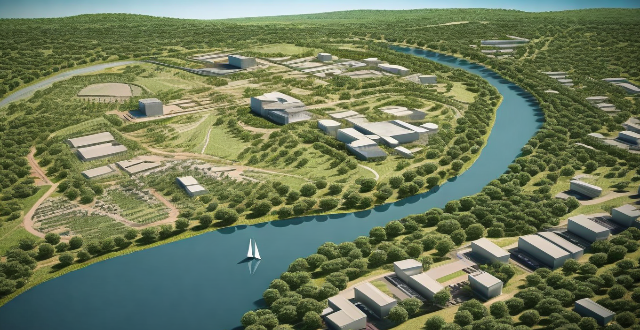Geoengineering, aimed at countering climate change, can significantly impact ecosystems and biodiversity. Techniques like Solar Radiation Management (SRM) and Carbon Dioxide Removal (CDR) may lead to changes in photosynthesis, temperature, precipitation, and ocean ecosystems. SRM could cause shifts in localized climate zones, affecting species adapted to specific conditions. CDR might involve land use changes and resource competition that could displace wildlife and alter ecosystems. Unintended consequences include potential ecological surprises and irreversible changes. Rigorous research and careful implementation are essential to mitigate these risks.

Impact of Geoengineering on Ecosystems and Biodiversity
Geoengineering, the deliberate large-scale intervention in the Earth's climate system to counteract climate change, has the potential to significantly impact ecosystems and biodiversity. While the primary goal of geoengineering is to reduce global warming, the unintended consequences for the environment could be severe. Below are some ways in which geoengineering could affect ecosystems and biodiversity:
Solar Radiation Management (SRM)
Changes in Photosynthesis
- Altered Light Spectrum: SRM techniques like stratospheric aerosol injection could change the quality and quantity of sunlight reaching the Earth's surface. This may interfere with photosynthesis, affecting plant growth and productivity.
- Reduced UV Exposure: Decreased ultraviolet radiation could alter the ecological relationships between organisms that rely on UV for signaling or as a cue for behaviors such as flowering or migration.
Temperature and Precipitation Changes
- Localized Climate Changes: SRM could lead to regional changes in temperature and precipitation patterns, potentially creating new climate zones that favor certain species over others.
- Habitat Shifts: These localized changes might cause habitats to shift, leading to fragmentation and loss of habitats for species adapted to specific environmental conditions.
Ocean Ecosystems
- Acidification and Nutrients: Changes in ocean currents and temperatures due to SRM could impact marine ecosystems, including coral reefs, by altering acidity levels and nutrient distribution.
- Marine Biodiversity: Altered ocean conditions could disrupt the delicate balance of marine life, affecting everything from plankton to fish populations.
Carbon Dioxide Removal (CDR)
Direct Ecological Impact
- Land Use Changes: CDR methods like reforestation or bioenergy crops could convert land currently used for agriculture or other purposes, potentially displacing wildlife and altering ecosystems.
- Resource Competition: The demand for water and nutrients by large-scale CDR vegetation could compete with local ecosystems, reducing resources available for native species.
Biodiversity Consequences
- Species Selection: If certain tree species are chosen for CDR projects, it could lead to monocultures, reducing biodiversity and making ecosystems more vulnerable to pests and diseases.
- Genetic Diversity: The widespread planting of particular genotypes for CDR purposes could reduce genetic diversity within species, affecting their adaptability to future environmental changes.
Uncertainty and Long-Term Effects
Unknown Risks
- Ecological Surprises: The complexity of ecosystems means that unforeseen consequences are likely, including potential "ecological surprises" where the impacts are greater than anticipated.
- Irreversible Changes: Some geoengineering effects could be long-lasting or irreversible, especially if they involve genetic modifications or permanent alterations to ecosystems.
Monitoring and Governance Challenges
- Data Collection: Monitoring the ecological impacts of geoengineering will require comprehensive datasets and advanced modeling capabilities to predict and track changes.
- International Cooperation: Coordinated international efforts will be necessary to ensure that geoengineering does not harm biodiversity while also addressing climate change effectively.
In conclusion, while geoengineering holds promise as a tool to combat climate change, its potential impact on ecosystems and biodiversity must be thoroughly considered. Rigorous research, responsible experimentation, and careful implementation will be crucial to minimize negative effects and protect the intricate web of life on Earth.